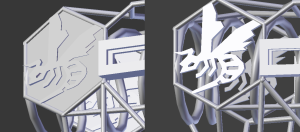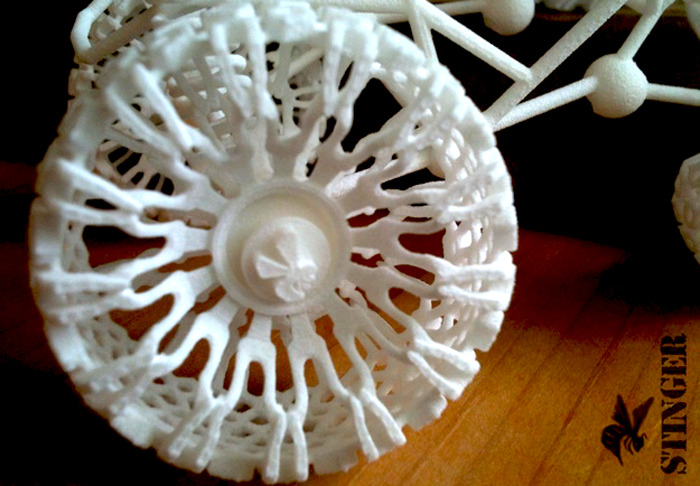Buckminster once said, “How many times do I have to tell you people? Do more with less!” Maybe not in those exact words or in that tone, but he definitely said something along those lines in whatever tone he said it with. Either way, no technology can best fulfill the architect’s demands than 3D printing. Richard Swalberg, a member of the Shapeways Crew and a mechanical engineer, demonstrates this exquisitely with a recently designed 3D printed rock crawling buggy.

Richy, as he calls himself, pitches the design of his light and skeletal Rock Crawler as a method for Shapeways designers to reduce costs on their printed designs, “I’m sure anyone who has uploaded their own design for the first time on Shapeways has experienced the realization that using more volume of material can really add up the cost… One skill that Shapeways designers can use to their advantage to save money on their designs, and give a unique look, is the use of negative space.”
Born of the necessity to lower costs, the Rock Crawler utilizes the novel wireframe design that has become increasingly popular on Shapeways and in 3D printing as a whole, which Richy explains astutely, “These models have enough material to allow the viewer to recognize what the model is and also enough to support the model structurally so, that it doesn’t break apart after it’s been printed. And the best part is that this gives a new style and form to the items being created.”
So, in order to make his Rock Crawler worth the price, the engineer opted for hollow wheels that match his wireframe chassis, ultimately reducing the price of his print by something like 10 times. And, in the end, Richy’s dune buggy (sold at his Stinger Shapeways shop), comes out to be about $40 on Shapeways. The final design is really cool, printed in a single piece, including 3D printed springs that allow the Rock Crawler to do what it does best: crawl rocks. Watching it in the video below was almost enough to, sincerely, consider buying one!




